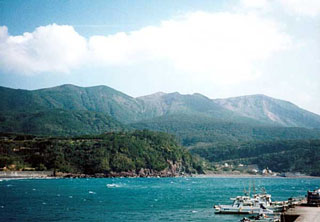Report on Kuchinoerabujima (Japan) — March 1996
Bulletin of the Global Volcanism Network, vol. 21, no. 3 (March 1996)
Managing Editor: Richard Wunderman.
Kuchinoerabujima (Japan) Increasing number of earthquakes since January
Please cite this report as:
Global Volcanism Program, 1996. Report on Kuchinoerabujima (Japan) (Wunderman, R., ed.). Bulletin of the Global Volcanism Network, 21:3. Smithsonian Institution. https://doi.org/10.5479/si.GVP.BGVN199603-282050
Kuchinoerabujima
Japan
30.443°N, 130.217°E; summit elev. 657 m
All times are local (unless otherwise noted)
According to the Sakura-jima Volcanological Observatory of Kyoto University, the number of earthquakes has increased around Shin-dake since January. The total number of earthquakes recorded was 32 in January, 40 in February, and 77 in March.
A group of young stratovolcanoes forms the E end of Kuchinoerabu-jima Island, midway between Suwanose-jima and Kyushu. Several villages on the 4 x 12 km island are located within a few kilometers of the active crater of Shin-dake and have suffered damage from historical eruptions. Shin-dake is the summit cone, and has been the site of all 13 eruptions known since 1840. The last eruption was a weak 30-minute explosion on 28 September 1980 that sent an ash plume 2-3 km high.
Geological Summary. A group of young stratovolcanoes forms the eastern end of the irregularly shaped island of Kuchinoerabujima in the northern Ryukyu Islands, 15 km W of Yakushima. The Furudake, Shindake, and Noikeyama cones were erupted from south to north, respectively, forming a composite cone with multiple craters. All historical eruptions have occurred from Shindake, although a lava flow from the S flank of Furudake that reached the coast has a very fresh morphology. Frequent explosive eruptions have taken place from Shindake since 1840; the largest of these was in December 1933. Several villages on the 4 x 12 km island are located within a few kilometers of the active crater and have suffered damage from eruptions.
Information Contacts: Japan Meteorological Agency (JMA), Volcanological Division, Seismological and Volcanological Department, 1-3-4 Ote-machi, Chiyoda-ku, Tokyo 100, Japan.

